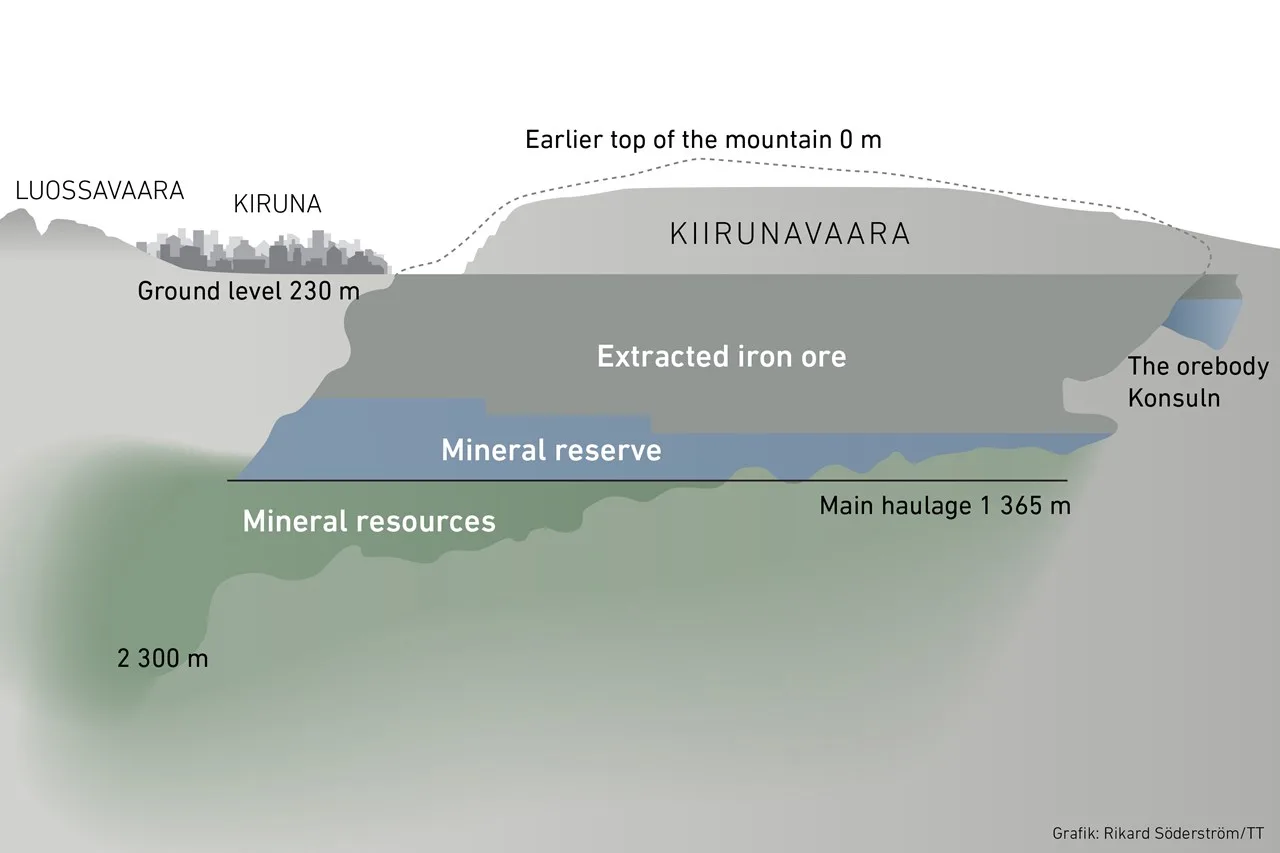Extent of orebody in Kiruna more complex than expected

The large slab of ore in Kiruna does not continue at depth with the same volume as LKAB had hoped."We see that it decreases more to the south than previously assumed. But we do not yet know enough about how it develops at depth towards the north," says Pierre Heeroma, Senior Vice President for Exploration, Strategy and Business Development.

Since its discovery, the orebody in Kiruna has never ceased to amaze. Over four kilometres long, between 80 and 120 metres thick and with unknown depth, it has often been called the world’s largest known continuous volume of iron ore. And so it remains, even though there is some uncertainty as to how it continues at depth.”In late 2016 an extensive test-drilling programme was initiated to gain a better overview of the extent of the deposit and thereby provide a basis for a decision on a possible new main level. We have analysed the results of tested drilling conducted since then,” says Pierre Heeroma.
The results show that the mineralisation does, indeed, continue northward at depth, with the deepest hole indicating ore at the 2,300-metre level, but the volume diminishes to a greater degree to the south than previously assumed.”LKAB has long known, and reported, that the orebody changes shape and position at depth, but we haven’t had a very good idea of the exact extent under main level 1365. We do not yet have a clear picture of how the mineralisation looks towards the north, but we can see that it decreases at the southern end.”
Mining companies report their mineralisations according to industry standards. Mineral reserves are classified as what has been tested and for which analysis has verified that it can be mined profitably. Mineral resources are deposits that are not as well surveyed and for which a profitability analysis has not yet been made.”It is important to point out that LKAB’s reported reserves and resources are not affected by these new findings. What we are discussing here is LKAB’s after 2030,” says Pierre Heeroma.
Up until 2016, LKAB had focussed on prospecting regionally to get more mines into production. After it was decided that the Mertainen mine would be mothballed a strategic decision was taken to focus instead on prospecting in the nearlying area. The goal is to improve knowledge of the deposits that are already being mined and to determine if they continue at greater depth and if there is more ore in the immediate vicinity.
So, how much smaller is the Kiruna deposit than was previously assumed?”We actually have no idea. More testing is necessary. We can now see that the mineralisation does not extend as far as LKAB had hoped; i.e., that the large slab would continue at depth along its known length. But we are now working hard to get an answer within the next few years,” concludes Pierre Heeroma.




